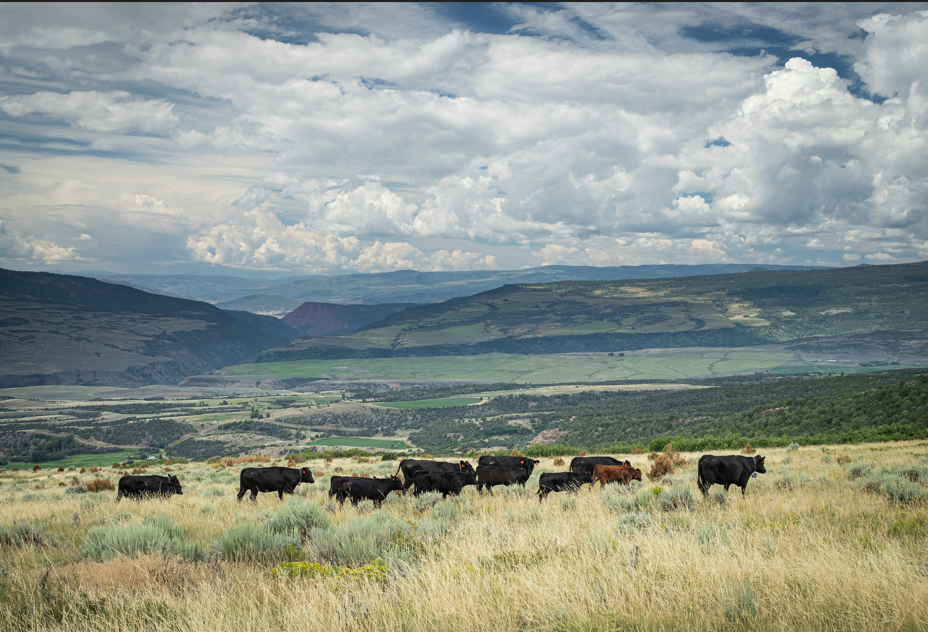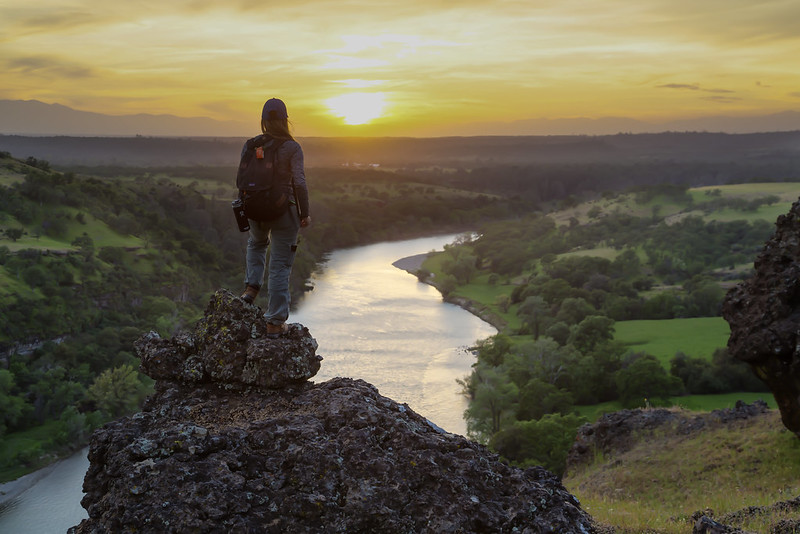GRAND JUNCTION, Colo. (September 12, 2024) — Today, the Foundation for America’s Public Lands, the official Congressionally-chartered charitable Foundation supporting the Bureau of Land Management (BLM), announced the Eagle County Conservation District in central Colorado will receive nearly $1 million in grant funding to work with cattle ranchers to expand the growing use of virtual fencing on BLM rangeland in the Upper Colorado River Basin.
The project will expand range restoration efforts of cattle ranchers to improve resilience to drought conditions and promote rotational grazing practices to reduce erosion, with the added benefit of keeping cattle away from recreational areas and sensitive archeological sites. The grant comes from the newly launched Drought Resilience Fund, which powers locally led partnerships with the BLM to combat the severe drought challenges facing public lands and Western communities.
“The Colorado River is an essential lifeline that millions of people rely on every day. As the West faces a worsening water crisis, communities are stepping up and leading meaningful work to curb the harmful impacts of drought on public land and their livelihoods. The Foundation’s new Drought Resilience Fund will invest in the work of partners on the ground who have deep knowledge of the land,” said I Ling Thompson, CEO of the Foundation for America’s Public Lands. “By investing in projects that are led by local community-based stewards, the Foundation will help drive economic vitality in rural communities and foster long-term, lasting stewardship of public lands and waters.”
Nearly 40 million Americans depend on the Colorado River to support their livelihoods. However, worsening drought in the West is a persistent challenge that poses an existential threat to communities, landscapes, and economic vitality. While communities and partners across the American West are leading impactful efforts to implement water conservation measures and drought-resistant practices, additional resources are urgently needed to bolster long-term resilience.
The Drought Resilience Fund marks the Foundation’s first grantmaking endeavor as it charts its inaugural programs and priorities. Through strategic investments in locally led partnerships, the Fund will support projects that are building lasting solutions to overcome the challenges of drought on BLM-managed lands and waters. The Fund leverages investments from the Inflation Reduction Act and private philanthropic contributions.
Expanding Virtual Fencing for Livestock Grazing on Public Lands in Colorado
The Eagle County Conservation District will receive $994,437 over three years to expand virtual fencing for cattle grazing on BLM lands in Colorado. Virtual fencing—which BLM has pioneered on public lands— is a powerful tool to improve rangeland health and drought resilience, using rancher-led innovation and technology to set boundaries on grazing areas instead of physical fences, which are challenging to maintain. By keeping livestock contained to specific areas, virtual fences provide real-time data on the location of cattle and support active, rotational grazing to help prevent soil erosion. Virtual fencing also supports range restoration activities that improve rangeland health and drought resilience outcomes. This technology also supports the mixed use of public lands by keeping cattle away from recreational areas, sensitive archeological sites, and restoration projects. In its first year, the project will:
- Expand range restoration activities on ground covered by virtual fencing, combined with monitoring of range health, to track anticipated improvements in water and soil quality.
- Introduce virtual fencing and rotational grazing to Bocco Mountain in Northwest Colorado, which has not been utilized by cattle in more than 30 years due to lack of fencing infrastructure.
- Provide staff and equipment to scale the project to include more ranchers and BLM grazing lessees.
“With support from the Foundation, Eagle County Conservation District looks forward to expanding our partnership with Eagle County ranchers and the BLM to deploy the technological innovation of ‘virtual fence’ at the rangeland scale,” said Laura Bohannon, Executive Director of Eagle County Conservation District. “We will continue to learn and demonstrate its ability to support range stewardship and enhance the drought resilience of our rangelands through collaboration, sustainable grazing management practices, restoration work, research, education and outreach.”
“The outcome from virtual fence and all the GPS location data you get on your cows is only as good as your operator and the team supporting the effort,” said Pat Luark of the Luark family, owners and managers of Reverse JL Bar Cattle Company. “That said, the folks supporting our family’s efforts have been phenomenal and the results speak for themselves: We were able to have 150 cows out on our BLM grazing ground in winter because we had so much growth and ground coverage at a time when hay was going for $300/ton—that’s a real benefit.”
Later this year, the Foundation will announce additional funded projects, and opportunities to apply for funding in 2025.
About the Foundation:
As the official charitable partner of the Bureau of Land Management (BLM), the Foundation for America’s Public Lands serves as a convener, partner, and fundraising catalyst to help ensure the health and sustainability of America’s public lands and waters today, and for the future.
Founded in 2022, the Foundation works hand-in-hand with the BLM, local communities, and partners to increase support for public lands and waters and inspire more people to connect with the outdoors. Each unique and truly special scenic river, wilderness area, monument, historic trail, conservation, and working land holds a story of its own.
To learn more about the Foundation for America’s Public Lands, visit americaslands.org or follow the Foundation on social media.




